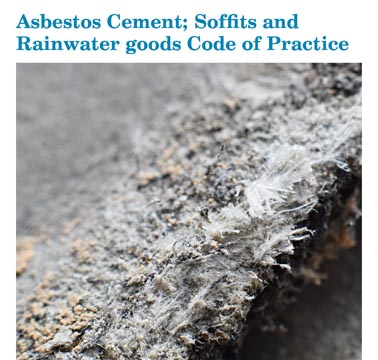216 Dead In Workplace Tragedies – Thousands Die From Asbestos
Latest annual figures show 124 workers were killed in work-related incidents in Great Britain. A decrease of fourteen from the previous 12-month...
Read Full Article
1999 saw the end of asbestos use. Over 20 years on, we’re seeing the delayed latency period taking effect as asbestos deaths have peaked over the last year or so.
Asbestos was unknowingly dangerous to public health when it was first used throughout the 50s through to the 70s and less so thereafter.
Asbestos can remain stable and thus relatively safe if undisturbed. But when it deteriorates fibres that are too large to be broken down by the body are breathed in and lodged in our lungs, causing many adverse health effects. Inhaling asbestos is directly linked to multiple diseases, including Mesothelioma, Lung cancer, Asbestosis.
These diseases can have high fatality rates. Furthermore, these asbestos-related illnesses have a delayed latency period. This means they don’t usually develop until many years after exposure. This material was used heavily industrially and residentially.
Here, we’ll explore the biggest asbestos failings and what we’ve learnt from them.
Is asbestos still a risk?
Although asbestos was banned in the UK two decades ago, the dangerous carcinogen lingers. It is the leading cause of occupational death, with 5,500 deaths caused last year. A new report revealed that although there have been significant efforts across the board to have the material removed to avoid risking life, there are an estimated six million tons of asbestos remaining inside around 1.5 million buildings. Some of these buildings include schools and hospitals built before 24 August 1999.
Failure to plan, manage, and monitor
Several construction companies have been heavily fined due to failing to recognise the risk of asbestos on school sites, putting subcontractors, staff, and their families at risk. It is not only the direct inhalers of the fibre that are exposed to harm - secondary asbestos exposure occurs when those working with the material bring it home, for example, on their clothes.
Teachers
Hundreds of teachers have sadly lost their lives due to asbestos exposure at work over 15 years. Teachers have since been campaigning to have asbestos removed from 32,770 schools across the UK.
Kevin Courtney, joint general secretary of the National Education Union, said: “On average, a teacher has died of asbestos-related disease every fortnight over the past 15 years. This death toll will continue until the government develops a planned and costed programme for its removal from educational buildings.”
The importance of a duty holder
At the end of 2019, the Ministry of Defence admitted extensive failings in managing asbestos across its estate, resulting in thousands of employees being exposed to the carcinogen with potential adverse health effects in years to come. Asbestos-containing materials (ACM) weren’t properly identified and tracked; a serious downfall for a government department.
The duty to manage asbestos is enshrined in law - the Control of Asbestos Regulation 2012 places a legal responsibility on a person assigned as the duty holder so that suitable asbestos management action is planned and taken so that buildings are safe. Duty holders who fail their responsibilities can be faced with legal action.
If you’re a duty holder and are unsure of the risk in your building, find out more about asbestos survey types.
The fatal impact of cutting corners
Kate Richmond, who worked as a medical student and junior doctor at the NHS, was given a few months left to live in early 2020. She was negligently exposed to asbestos at the old Walsgrave Hospital in Coventry. Around the same time, many compensation claims were placed by NHS staff for asbestos-related diseases since 2013, which has cost the health service over £26 million.
Similarly, in 2011, major multinational retailer Marks & Spencer was faced with a £1 million fine for exposing customers and employees to asbestos in Reading and Bournemouth stores during refurbishments. The judge accused the retailer of choosing profit over health and safety and effectively neglecting to ensure a safe working and shopping environment.
Negligence like this can certainly be more costly than simply conducting an asbestos audit or providing the correct preventative measures. It can tarnish an organisation’s reputation by failing to provide a duty of care.
Make sure you take the appropriate safety measures - the effects of asbestos cannot be undone but it can easily be prevented.
Picture: The GGF has just launched an Asbestos Cement; Soffits and Rainwater Goods Code of Practice.
Article written by Cathryn Ellis
25th June 2021